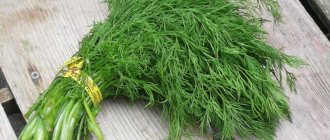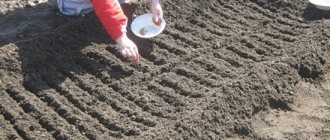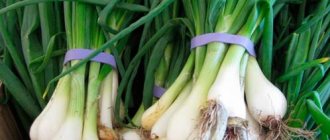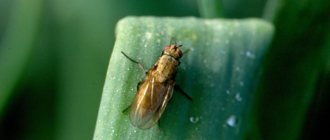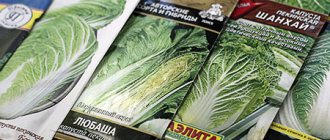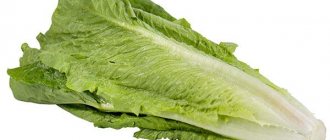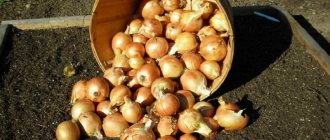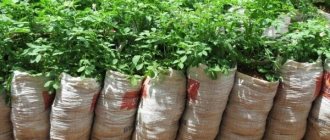Fields sown with oats, until recently, stretched to the very horizon, pleasing the eye with a pleasant first green and then golden carpet. Today, oats are sown less frequently, but this cereal is becoming in demand due to its high nutritional value.
If we talk about oats not on an industrial scale, this crop has become widely used to improve soil health. Like a real doctor, oats suppress the growth of aggressive weeds, and the deep roots of the plant enrich the soil with potassium and organic matter, improving its structure and water permeability. Poultry loves oats, and the use of this cereal in medicinal nutrition has broken all popularity records. Seeds are carefully prepared for sowing: treatment for about 20 minutes in a weak solution (1%) of potassium permanganate allows you to avoid contamination of crops with infectious diseases. It is better to buy seeds from trusted companies at the rate of 1 kg of oats per hundred square meters. Oats are a very unpretentious crop; they are not afraid of cold and snow. Already at the end of April, seeds can be sown in soil prepared in the fall. In order for oats to sprout vigorously, you need to sow them in moist soil. Seeds germinate at a temperature of 1-2 degrees Celsius, so early sowing is preferable. Oats are sown in two ways: in rows and scattered. If the area is small, then it is better to sow in furrows, the distance between them should be at least 10 cm, and the depth should be 3-4 cm. Large areas are sown randomly, making sure that the seeds are scattered evenly. After sowing, the seeds must be carefully embedded in the soil; this is conveniently done with the back of a rake. If oats are used as green manure, then after they have sprung well and bloomed, they mow them and plant them in the ground. The sprouts decompose, nourishing the soil and healing it from various diseases. To speed up this process, in dry weather it is necessary to water the area.
In order to collect the grain, you need to wait for it to ripen, when the upper part of the panicles reaches waxy ripeness. If the collection is carried out manually, then the plants are cut and, as in the old days, tied into sheaves, which are stored in a ventilated room. The oats must dry, after which they are threshed.
Oats are grown to improve soil health, prepare healing infusions, decorative crafts from golden straw, and making beautiful dry bouquets is not at all difficult. This plant is responsive to care and good care; the main thing is not to miss the timing of its sowing.
Tired of shoveling heaps of compost in their garden every year, summer residents lose all desire for organic farming and think about using artificial fertilizers. However, in the world of agriculture, safer and more effective methods of soil enrichment are known. They will be of interest to gardeners and farmers who do not want to spend a lot of time and money to achieve optimal soil structure on their land. We are talking about soil greening.
This process involves the use of special technological crops with a developed root system and succulent vegetative mass to replenish the soil with organic substances and mechanically improve its structure. Such crops include plants of the cruciferous family (mustard, winter and spring rapeseed, oilseed radish), cereals (rye, oats, barley, wheat), legumes (alfalfa, clover, peas, lupine, vetch), buckwheat (buckwheat) and many others . Ground cover green manures are reservoirs of phosphorus, nitrogen and potassium. They cope no worse than saltpeter, urea or ammonia water in fertilizing the soil in the autumn and spring. The farmer will learn from this review how to choose and when to sow green manure to achieve optimal farming results.
Oats - a green protector of the fertile soil layer
In agriculture, ordinary oats are often used as green manure to improve soil properties. This annual plant belongs to the cereal family and is highly resistant to frost. Unpretentious oats sprout very easily and, by following simple agricultural techniques for growing this crop, the farmer will be able to obtain a sufficient volume of vegetative mass suitable for enriching the soil, restraining erosion processes and preventing the growth of weeds on the land.
In view of this, when choosing green manure for the garden in the fall and spring, large farmers, owners of small farms and simple amateur vegetable growers from most regions of the country give preference to oats. Knowing when to sow green manure in the fall and spring, farmers will gain many benefits from the process of using this green fertilizer. In particular, green fertilizer will help summer residents who are concerned about the problem of the rapid spread of weeds on the site.
The dense and fast-growing vegetative mass of oats inhibits the proliferation of weeds and helps farmers in the fight against unwanted “invaders” of crop areas. Green manure also stimulates the growth of organic compounds in the soil, necessary for the high-quality growth and ripening of agricultural crops. A farmer who is looking for an answer to the question of when to plant green manure in the garden often asks another question that touches on the environmental friendliness of using green fertilizers.
The use of green manure is one of the most environmentally friendly methods of soil enrichment.
Researchers have found that cereal green manure, by covering the ground with vegetative mass, helps protect the fertile part of the soil from erosion caused by winds and heavy rains. In addition, the best winter green manures, including oats, help return missing nutrients to the soil that were “pulled out” by vegetables growing during the summer season.
Green manure cover crops also help regulate soil temperature, stimulate microbial life in the soil's interior, and effectively modify soil structure by creating root channels for better drainage and aeration. Seeing oats cover the ground with a green blanket of stalks, a farmer can be confident that his land will be provided with all the necessary organic matter necessary for healthy soil and growing a healthy and abundant crop.
How to care for crops?
After sowing, oats must be properly cared for according to the following rules:
- Water thoroughly if the weather is dry. The fact is that oats are a moisture-loving crop, so if the amount of water is insufficient, then without additional irrigation it will not be able to actively grow and intensively produce green mass.
- Check the condition of the crops every 3 days. It is necessary to determine whether the sprouts have hatched, what type they are, whether the leaves are developing normally or are drying out due to warm weather. If the stems are stunted, then you need to add a little mineral fertilizer in the form of ammonium nitrate or superphosphate. It should be noted that similar problems have to be encountered if the previous crop has excessively depleted the soil even for green manure.
- Apply a special agrotechnical technique - when the oats reach 10-15 cm, you need to trim them by 30%. Such manipulations stimulate plant growth, which in the future makes it possible to obtain more green mass to fertilize the soil. It should be noted that gardeners have experimentally established that cereals cut to a third of their height outstrip even those plants that were sown a week earlier.
In general, oats are easy to grow and only need adequate moisture. Only in isolated cases is it necessary to add additional fertilizers to the soil.
Pros and cons of using oats as a green manure crop
Compatibility of green manure with vegetable crops
By the way, all cereal green manures have positive and negative sides - the farmer needs to study the pros and cons of such a green manure crop as oats before planting the seeds. This will help the farmer evaluate the feasibility of using this green fertilizer and make the right decision about which green manure crops are best to sow in the fall and spring on his plot.
So, the strengths of this green fertilizer include the following factors:
- resistance to cold and shade;
- ability to grow in poor soils;
- high density of seed germination;
- the presence of simple agricultural cultivation technology;
- affordable cost of seeds;
- good compatibility with most agricultural crops, including cabbage, eggplant, peppers, tomatoes, strawberries, raspberries and many others (with the exception of other cereals that share common pests with oats, and potatoes, which are susceptible to wireworm damage);
- the ability of oats to process complex phosphorus compounds in the soil;
- high content of phosphorus and potassium.
The culture also has disadvantages, these are:
- meager volume of vegetative mass;
- insufficient level of soil enrichment with nitrogen (to compensate for this disadvantage, it is recommended to use other green manure plants together with oats - alfalfa, clover or vetch);
- the crop's requirements for watering;
- weakness of the fibrous root system;
- low heat tolerance.
Before drawing up a sowing plan, it is important for the farmer to take into account all the features that oats and other cereal green manures have - the crop rotation of these crops is also important to take into account. A farmer can obtain information about the specifics of oat crop rotation from specialized agricultural literature. After this, the farmer will need to learn how to properly use green manure in practice. When you need to sow green manure and how to calculate the optimal number of seeds per one hundred square meters of land will be discussed in the next section.
Specifics of planting and sealing green manure
Having decided on the issue, and in the spring to improve the quality of the soil, the farmer goes to the store to buy seeds. On average, to enrich one hundred square meters of land with green fertilizers, you will need to purchase about two kilograms of cereal. Depending on the nature of the soil and the level of nutrients in it, the sowing rate can be reduced or increased.
In addition to calculating the norm of oats, gardeners are interested in the question of planting dates. They often enter the following phrases into a search engine: is it possible to plant green manure in October, is it worth waiting for certain weather to sow them, etc. Agronomists, when talking about when to plant oats as green manure in the fall, often call the first weeks of September the optimal time for planting the crop. When deciding when to sow green manure in the fall, it is important to take into account temperature conditions. It is necessary to complete sowing before the first frost.
When sowing in spring, the best time to plant green manure also depends on weather conditions. Residents of the southern regions can scatter seeds across the field at the end of February, but owners of summer cottages located in temperate climate zones are better off waiting for the warm days of March. Having decided to use green manure on the plot - when to sow and when to bury oats - this is not the only question that will bother the summer resident. The farmer will also be puzzled by studying the agricultural technology of growing this crop.
As a rule, sowing of oats is carried out in the field using the scattering method, which does not require special equipment (except for those cases when we are talking about sowing larger areas of land). For sowing, you will need pre-prepared seeds and pre-leveled and loosened soil. After the seeds have thickly covered the soil, they must be covered with a rake and watered.
The planting depth of green manure crops should not exceed a couple of centimeters.
The question of when to mow green manure also worries farmers. It is recommended to mow the crop before flowering to prevent uncontrolled self-seeding. As you can see, in both spring and autumn, a summer resident can use oats as green manure; he decides whether to dig up this crop in the fall on his own. If desired, the oats can simply be cut and left on the soil to form a humus layer. If the gardener wants to change the structure of the soil and deliver nutrients deeper, then he will need a shovel to dig up the vegetative mass of green manure.
Saving time and money while caring for your garden is not that difficult. To do this, the summer resident needs to follow new trends proposed by farmers to improve farming results. One of these trends is soil greening by planting oats in the off-season. Having learned from the article when to sow green manure in autumn and spring, the farmer will be able to significantly optimize the process of soil enrichment, because with the introduction of green fertilizers he will not need to waste time on mulching, weeding and adding organic mixtures. All these labor-intensive actions will be replaced by competent cultivation of green manure in the garden, the result of which will become noticeable within the next season. More information on how to properly use green manure in your garden can be found.
Sowing green manure allows you to restore the structure and improve the composition of the soil, enrich it with useful microelements and improve its health. Various agricultural crops are used as green manure: legumes, cereals, buckwheat, mustard, rapeseed, sunflower, calendula and others. It is impossible to name any plant that would be universal. But it is worth highlighting oats from the total number. It has many advantages that experienced gardeners know about.
Features of cultivation
These are fast-growing herbaceous plants that do not bear fruit. Their main purpose is to fertilize the earth.
The common property of all green manure is to quickly grow green mass, which, when mowed, quickly rots and well increases the yield for one season.
There are many types of green manure, and their planting has its own nuances and subtleties. There are some differences when planting green manure in autumn and spring. It is necessary to cut off and dig up the grown spring green manures,
The value of green manure
If the soil is not fertilized, it loses its structure, becomes poor, too dense and compacted. The humus layer becomes thin, the amount of useful substances, microorganisms, minerals, and so on decreases.
Air flows poorly into such soil, the roots do not receive proper nutrition, the plants become smaller, the stems become thinner, and the plants become sick.
- Green manure saturates the soil with nutrients;
- increase the humus layer, restore soil organic matter;
- reduce the number of pests and prevent pathogens from developing;
- slow down the development of weeds;
- loosen the soil and help maintain a normal level of moisture in it;
- retain snow in winter and prevent the soil from weathering;
- protect the soil from spring frosts.
Each garden plant has its own best green manure predecessor. Some can only harm a given plant and cause rapid development in another.
There are spring green manures - those that are planted in the spring, and winter ones, which are best planted in the fall and before winter. Their important feature is the ability to grow quickly and gain green mass.
The following families of green manure are distinguished:
- Legumes - sweet clover, peas, vetch, clover. They draw nitrogen from the atmosphere and enrich the soil with it, help plants absorb phosphates, and repel soil pests.
- Cruciferous vegetables - mustard, rapeseed. The root system of these plants loosens the soil well and enriches the soil with sulfur and phosphorus.
- Cereals - wheat, oats, rye. They improve the structure of the soil and enrich it with potassium. Well suppresses the growth and development of weeds.
- Borageaceae - phacelia. Improves soil structure, grows quickly, neutralizes the acidic environment in the soil, suppresses the growth of weeds.
Among winter green manures, five are the most popular among gardeners.
No wonder they called it Mother Rye. It loosens the soil, parasitic plants do not grow in it, and after it there are practically no nematodes left in the soil. Rye disinfects the soil and removes rot from it. After rye, the soil becomes more nutritious. It also prevents the ground from freezing in winter.
It is planted in front of melon and nightshade crops and root crops.
Has the ability to improve clay soils. It makes them lighter and disinfects them from root rot. Works especially well in combination with vetch.
We invite you to read: Pickled squash for the winter You will lick your fingers
It is best planted as a predecessor to cucumbers and zucchini.
Barley
Winter and spring barley is planted as green manure in the fall. Like other cereal green manures, it copes well with putrefactive processes in the soil. The ears have a highly branched root system that blocks the development of weed seeds. It disinfects and improves soil and grows well in depleted soil. But it cannot be used on the same area for several years in a row.
This is an excellent predecessor to cucumbers, tomatoes, eggplants and potatoes.
This is a leguminous plant, very beautiful when in flower. Its fruits are so small that it is simply impractical to use it as a fruit crop. Its stems are strongly intertwined, creating deep shade underneath and preventing weeds from developing. It fertilizes the soil well, enriches it with nitrogen, drains it, fills it with air, and improves the health of the entire ecosystem. The soil under vetch plantings is reliably protected from erosion and washout.
It is good to use in front of any plants except legumes. It works especially well when paired with oats.
It has a detrimental effect on earthen pests, has an excellent weed control, and prevents weed seeds from developing. Destroys pathogens in the area.
It should be sown as a winter green manure back in August; nightshade species grow especially well after it.
Mustard
An inexpensive and effective way to structure the soil. It enriches the soil with humus, grows well even on heavy soils, and turns them into light and porous ones. Protects the garden from weeds and harmful insects. Mustard can bring hard-to-reach substances from the soil into an easily digestible state. Suitable as a predecessor for nightshades and melons.
You need to decide when to sow green manure before winter in mid-July. After all, some of them are sown in August.
The time of sowing depends on the region - in the southern regions it can be postponed to a later period - to September, or even the first half of October. In the northern regions, night frosts sometimes even occur at the end of August.
Already at this time, the first steps are taken to plan plantings for the next year - this determines which green manure crops to sow and where to sow now. Plants planted in August should have time to grow 20-30 cm before the onset of cold weather, then they are cut off. But whether it is necessary to dig up the ground after this is a question at your discretion.
Winter green manures begin to be planted immediately after harvest. You can start as early as September, and if the summer is cold, then in August. If the August plantings germinate, the green cover should be cut off and left on the surface, and new green manure should be sown - they will become winter crops. Cut greens will become additional fertilizer when they rot.
Should I plant them in the fall?
Autumn sowing of green manure is often very useful.
- Saves time in the spring. There is no need to plant green manure at the hottest time and wait until it grows, then mow it and plant early vegetables in its place. It is already in the ground and is already sprouting.
- Moisten the soil. Green manure retains snow and moisture longer, and the ground has time to become saturated with it.
- Stay in the soil longer. Autumn planting of green manure extends the time they remain in the soil until almost mid-spring. Their root system loosens it, releases additional minerals, and saturates it with oxygen. All this will then be necessary for growing later crops.
- Protect from sun and frost. Cut green manure remains on the surface of the ground, covering it and serving as a kind of blanket for it. You can dig up the area as soon as stable heat sets in, and start sowing 2-3 weeks after digging.
How to sow
There are several basic rules.
- The area chosen for green manure must be properly cleared of the remnants of the harvested crop. Particular care must be taken to remove diseased and damaged remains of tops, weeds and remnants of previous plantings.
- They are sown in areas where crops are to be grown in the future.
- Before planting green manure, potassium-phosphorus fertilizers are applied to heavily depleted soil.
- Dried soil must be properly moistened; then you can sow in 2-3 days. When moistening, the soil must be dug to a depth of 5-10 cm, loosened well and then you can water it.
- No furrows are made for winter green manure. The seeds are evenly distributed over the prepared area, but not covered with soil, but covered with a rake and covered with a small layer of compost. If you make furrows, they should be shallow - 2-3 cm. You should sow very densely; in this case, the plants are not expected to produce a harvest.
With the onset of spring, green manure begins to grow rapidly. When they grow to a height of 20-25 cm, they are cut off and left on the surface of the earth. This creates a layer of mulch, under which the remaining roots quickly rot. Before planting the main crop, the soil with rotted green manure will need to be dug up.
Plants that sprouted in the fall are not touched; they are left to stand until spring. Winter species will remain green and will withstand frost well.
The main crop is sown a month after mowing the green manure.
Is it necessary to dig up green manure in the fall? This is completely optional. Grown green manure plants create dense protection on the surface of the earth, and with the onset of cold weather their growth completely stops. They will begin to grow again in the spring. That's when they will need to be mowed down.
Wheat, rye, oats, barley are excellent green manures, but winter and spring crops behave completely differently when planted. Their use as organic fertilizer must also be approached differently. Winter varieties are hardier, tolerate frost more easily and can remain green until spring. Spring crops die after the first frost.
Spring crops may not have time to rot in the ground over the winter. In this case, in the spring, their root system is trimmed with a flat cutter.
You can even distinguish them by their appearance:
- The spring variety is more rounded and has a bright golden color. If you chew it, it is soft and easily dissolves on the tongue. This is soft wheat.
- Winter - elongated, sharp, whitish in color, the grain seems almost glassy. It is not easy to chew, it is really very hard. Refers to durum wheat.
The same characteristics apply to other types of cereal green manures.
The soil in a greenhouse is different from open soil. It does not receive useful substances, it quickly becomes thinner and undergoes erosion. Greenhouse fertilizers for the greenhouse become a real salvation.
Green manure is what will help disinfect the soil, destroy pests, and saturate the soil with necessary microelements.
But there is a danger of oversaturation with certain substances and a lack of others - if you use the same green manure for several years in a row. They need to be changed in different areas. Crop rotation is necessary and important.
The rules for spring and autumn planting green manure in a greenhouse are also different.
How to plant
The sowing rules are almost the same as when working in open ground.
- In the selected area, you need to properly remove all the remains of previous plants, tops, visible roots, and so on.
- Level the soil and sprinkle it thickly with seeds.
- Lightly rake them in.
- Sprinkle a small layer of compost on top.
- Moisten the soil well.
How to sow
- Saturation of the soil with nutrients, vitamins, potassium, phosphorus and nitrogen. In terms of the quality of fertilizers, oats can be compared to manure, only the grain is not dangerous and will not cause pests and fungi.
- Loosening the soil, strengthening the fertile layer. It is good to sow oats in those places where the cultivation of potatoes, tomatoes, legumes and peppers will begin next year. The root system of these plants is very sensitive and therefore requires soft, loose soil. This is exactly what oats will provide. In addition, grain improves the structure of the earth, making it breathable and moisture-absorbing.
- Protection from weeds and pests. This advantage is one of the most significant! Cereal crops have always been attractive for their ability to destroy or suppress the growth of weeds.
- Easy to grow and care for. The plant quickly adapts to a new habitat, does not require complex care and grows on almost any soil.
Advantages of oats as a green manure crop
Oats as a green manure are suitable for growing in temperate climates, as they easily tolerate positive temperatures and those close to zero. It loves moisture and light, but is not so picky about the type of soil, although it bushes less on infertile soils. This grain crop stands out among most other green manure plants for its advantages:
- It stands out for its availability and low cost. Oat seeds are always available not only in agricultural firms and specialized stores, but also on the market. The price of seed material is affordable even for families with below average income.
- When the green mass of oats decomposes, the soil is saturated with potassium and phosphorus, which are necessary for normal plant growth. Tomatoes, eggplants, and peppers are particularly demanding for potassium. The microelement content in young shoots is almost 5 times higher than in old shoots, so green manure must be mowed before the seeds ripen.
- It is an effective green fertilizer, as it easily competes with manure in its ability to fertilize the soil.
- The fibrous roots of the cereal loosen the top fertile layer, improving the air and moisture permeability of the soil. At the same time, they strengthen light soils and prevent weathering and soil leaching.
- Oat roots release special substances into the soil that prevent the occurrence of root rot and fungal infections.
- Due to the high germination density of the cereal crop, weed growth is suppressed.
- Oats as green manure will be a good predecessor for almost any garden crop, except corn and root crops.
- It is characterized by rapid growth - 30-40 days after sowing, the cereal can be mowed and embedded in the ground.
- Easily combines with other green manure plants. To increase nitrogen in the soil, it is sown in a mixture with legumes - fodder peas, vetch, alfalfa or clover.
- Unpretentious to soil characteristics - able to grow on clay soils, peat bogs and soils with high acidity.
To all the advantages of oats as green manure, one more thing can be added. It provides aesthetic pleasure - lush young greenery that has sprouted in early spring looks beautiful on bare ground. But it is necessary to sow oats on time. Gardeners practice sowing in both spring and autumn.
You should not plant oats as green manure under potatoes. Legumes (alfalfa, vetch, peas, lupine) are more suitable for this vegetable. When oats decompose, nitrogen is not released, which is so necessary for the root crop. In addition, there is a high risk of potato infestation with wireworms - this pest appears due to the cultivation of cereal crops.
Reviews
- Anastasia, 37 years old: “I use oats as green manure together with rye and wheat. Thanks to them, I have completely fertilized and fertile soil in my garden. I grow absolutely everything on it: potatoes, tomatoes, cucumbers, cabbage. Oats will also allow me to grow large and juicy raspberries, although before this they bore very poorly. The berries were small and literally crumbled in our hands.”
- Sergey, 57 years old: “Oats are a truly unique crop. In the spring I completely plant it on my site. Thanks to this fertilizer, I was able to get rid of the weeds that had previously grown abundantly in the garden. I cannot help but note the quality of the harvest. After adding nutrients, I was finally able to harvest a full onion harvest. And before that, my wife grew onions exclusively for greens, since they didn’t go into heads.”
- Christina, 28 years old: “I was advised to grow oats as green manure by my parents, who have been using this method for many years. I decided on such an experiment because I wanted to plant strawberries at the dacha. I noticed the benefits of this feeding even before fruiting began. The berry bushes were quite fluffy and green. The flowering was also abundant, and the berries were simply gorgeous. First of all, they were big and the taste was incredible. I’ve never eaten such juicy and sweet strawberries.”
It turns out that oats can be grown not only as a cereal crop, but also as a good soil amendment. By releasing useful components into the soil, oats allow you to grow various plants there, increasing their productivity. In addition, with the help of oats you can quickly remove weeds and other unnecessary vegetation. This material will tell you about the agricultural technology of planting sweet clover as green manure.
Sowing in spring
The optimal time for sowing is early spring, when the snow melts and the earth warms up a little. It is believed that dirt is not a hindrance to agricultural work when it comes to oats. After the snow melts, the soil contains enough moisture necessary for seed germination. Cereal seeds germinate even at a temperature of 0-1°C. If you miss the favorable moment and wait until the soil dries, you will have to take care of additional watering. You can sow oats later, but you need to time it so that the grain has time to grow before the heat sets in.
Although this crop has good germination, to improve the result, before sowing it is recommended to pickle the seeds in a solution of potassium permanganate for 20-30 minutes.
In large areas, oats are sown in a fan method - scattered densely over the surface. In small areas, the line method is used - in rows:
- Before sowing, the area is cleared of weeds and loosened.
- The seeds are buried 2-3 cm into the soil.
- If during the green manure process it is necessary to increase the nitrogen content in the soil, alternate rows of cereals and legumes.
- If the amount of seasonal precipitation is low, at least 3-4 waterings are organized - moisture-loving oats will respond with rapid growth.
Oats as green manure are sown much thicker than when grown for grain. Dense sowing encourages plants to stretch upward and bush, preventing weeds from getting through. The recommended seed consumption is 5-6 kg per one hundred square meters.
To speed up ripening, experienced gardeners practice mowing grain when the stems reach a height of 15-20 cm. This procedure stimulates active plant growth and increases the final yield of green mass.
Oats are finally mowed at the beginning of the heading phase. It is at this moment that the maximum amount of nutrients accumulates in the plant tissues, and green manure cut before flowering decomposes faster.
The mowed mass can be left on the surface of the site as a mulching material - it perfectly protects the soil from drying out and the growth of weeds.
To obtain green fertilizer, mowed oats are mixed with the top layer of soil, cutting fibrous roots at a depth of 5-7 cm. Do not dig up an area with mowed cereals on the bayonet of a shovel, otherwise acidification of the soil and the development of pathogenic microflora will worsen the condition of the soil and will bring harm rather than benefit . To speed up the fermentation process, the mowed mass is treated with EM preparations (EM-1, Baikal EM-1, Siyanie-1).
2-3 weeks after mowing the oats, the main garden crop is planted.
Video SIDERATS - IN AUTUMN, WE URGENTLY SOW ..MUSTARD, OATS, RYE. FOR FERTILITY OF THE EARTH..
Sowing oats is possible in two ways: scattered and in rows. In small areas or beds, the plant can be sown in rows. The distance between the stripes is left about 10 cm. In large areas they sow randomly, trying to scatter the grain evenly.
In both cases, the soil is first loosened and leveled. Prepare the grain material: the seeds are kept for 20-30 minutes in a pale pink solution of potassium permanganate, then washed several times in clean running water.
The consumption of oat seeds per one hundred square meters of land is 2-2.5 kg when sowing randomly, 1-1.5 kg when planting in rows. A 200 ml plastic cup holds 95-100 g of seed.
After planting, be sure to sprinkle the grain with a 2-4 cm layer of soil. This will protect the material from being blown away by the wind and pecked by birds. Thoroughly water the area using a watering can or hose with a sprayer. Oat grain loves moisture, so it germinates better in moist soil.
Rye is a herbaceous plant, annual or perennial, belonging to the large family of cereals. Its name in Latin is Secale cereale, which means “sowing rye”. Within the species there are wild subspecies and over forty cultivated varieties.
Plant differences relate to the following points:
- appearance and nutritional characteristics of grains;
- spine development;
- ear length;
- pubescence of the stem.
Root system. Rye has a fibrous root system, buried 1-2 m deep. This plant has powerful and developed roots, which are especially effective on light sandy soils. Rye roots, consisting of primary (embryo) and secondary (nodal) roots, quickly absorb nutrients contained in poorly soluble compounds.
Aconite whitemouth herbaceous plants for open ground
Winter onions planting in autumn
Frost-resistant grape varieties for Central Russia without shelter
Tomato varieties resistant to late blight for open ground
Stem. The rye stalk is a hollow straw consisting of several knees (from 4 to 7) connected by nodes. The lower internodes are thicker than the upper ones - 6-7 mm versus 2-4 mm. The stem is erect, pubescent under the spike, and then bare. The height of cultivated rye is limited to 1.5 m, wild species are higher - up to 1.8 m or more.
Ear. Rye has an inflorescence in the form of a spike, consisting of 2 or 3 flowering spikelets attached to the stem. The shape of the grain is oblong or oval, slightly flattened on the sides. The top of the grain is bare or pubescent. Each variety of rye has its own ear length, it varies between 8-17 cm. The weight of the grain depends on the variety:
- for large-grain varieties, 100 seeds weigh more than 38 g;
- for varieties with grains above average size - 30-38 g;
- for varieties with medium-sized grains – 20-30 g;
- for small-grain varieties - up to 20 g.
Rye grains vary in size, shape and color. Grain parameters: length – 5-10 mm; thickness - .5-3 mm; width – 1.5-3.5 mm. The grains can have the following shape: oval - length refers to width 3.3 or less; elongated - length refers to a width greater than 3.3. The surface has noticeable transverse wrinkles. The grain can be white, greenish, gray, yellow or dark brown.
Oat seeds are evenly sprinkled on top, which are covered with approximately the same layer of earth as the first. Some owners pre-soak the seeds in gauze before planting, and plant it in the ground with green sprouts, which allows the oats to germinate faster.
The planted seeds should be watered generously and covered with a plastic bag to create a greenhouse effect. To speed up the growth of grass, it is advisable to keep the soil or sawdust always moist.
The plastic bag can either be removed immediately after the seeds have sprouted, or left, but then regularly ventilate the young plants. You can cover the dishes in which the greens are growing with a potato or fruit net. This will prevent the cat from digging up the ground.
Since animals are more willing to eat young grass, oats should be planted twice a month, especially since the process itself, how to germinate oats for cats, is very simple and does not require special skills. And it takes very little time, because it only takes about a week to grow green grass approximately 5-6 centimeters high from seeds.
And you can feed oats even when the grass has taken root and even reached waxy ripeness. If the cat refuses to eat sprouted oats, then you can gradually introduce a small amount of it into the animal’s diet in crushed form. Young grass will only have a positive effect on the cat’s health, so a loving and caring owner should not neglect its cultivation.
What you need to know before sowing oats. Oats are not afraid of either cold or snow, so they can be sown to improve and fertilize the soil in a personal plot at different times. The first time for sowing is early spring, around the end of April, in soil prepared in the fall.
Sowing is planned for crops that are the last to be planted in the ground - zucchini, tomatoes, pumpkins, peppers. In greenhouses, oats can be sown even earlier.
Autumn soil preparation is necessary because due to the early sowing of oats, you don’t even need to wait until the soil finally thaws. And early sowing is necessary because oat seeds need a lot of water to germinate, since oats may not sprout in dry soil.
Oat seeds germinate at a temperature of one or two degrees Celsius, and its seedlings are not afraid of frost, so there is no need to be afraid of early sowing. Even if snow falls after germination, this will only benefit the oats.
In cold soil, oat seeds can be susceptible to various infections, so before sowing it is recommended to treat them with potassium permanganate for about twenty minutes in a one percent solution.
We invite you to familiarize yourself with: Chef’s Squid Salad
Oats are sown in rows and scattered. It is sown in rows in furrows when a small area is allocated for sowing and there are few seeds themselves. They sow randomly when the areas are larger.
In this case, it is necessary to ensure that the seeds are scattered evenly, and then embed them in the ground with the back of the rake, otherwise there is a danger that birds will peck them.
When sowing oats in rows, the distance between them should be no more than ten centimeters. The depth of embedding is three to four centimeters. In this case, one kilogram of oat seeds is enough for one hundred square meters.
After the oats have sprouted green shoots, they are mowed, crushed and incorporated into the soil two weeks after planting the main crops. If the weather is dry after planting in the ground, you need to water the area generously to speed up the decomposition process. Otherwise, plants planted after oats will not feel entirely comfortable.
You can plan the next sowing of oats yourself, but it should be noted that there is no point in sowing them at the end of August or September - winter rye is better suited here. In addition, in July and August the moisture reserves in the ground are much smaller, so you will have to water the area both before and after sowing.
That's all that can be said about sowing oats as a green fertilizer. Nothing complicated! All you need is a little free time and the desire to increase the harvest collected on your own plot.
A story about how oats grow and what is cooked from them.
No special measures are required to care for the cereal. The only requirement is a sufficient amount of moisture for the growth and development of green mass. If the weather is stingy with precipitation, you need to water the plantings using nozzles with a sprayer.
If the sprouts that emerge are weak and grow poorly, this means that the previous plant has depleted the substrate so much that even oats cannot develop on it. In this case, it is necessary to add a small amount of mineral fertilizers, superphosphate or nitrate.
How to sow
Procedure:
- The beds must first be cleared of last year's plant debris.
- If necessary, go over them with a rake or flat cutter. Spring soil is moist and it is convenient to sow seeds.
- The best way is to simply scatter them over loose soil and not cover them. With the first precipitation they will go into the soil themselves.
Seed consumption:
- when sowing in beds - 400–500 g per 1 hundred square meters;
- in row spacing up to 15 cm - 120–150 g.
If the air temperature is above 10°C, then you will see the first shoots already on the 3rd–4th day. A continuous green cover is formed in about a month.
White mustard is the best predecessor for potatoes and tomatoes
Mustard does not require special care. If the weather is dry, it needs to be watered once a week. The plant does not need fertilizing.
If you do not plan to collect seeds from mustard, then it is better to mow it and seal it before flowering and the formation of pods, otherwise it will self-sow throughout the area and turn from green manure into a weed. There are two more reasons why you shouldn’t wait for budding:
- during this period, the plant spends a lot of nutrients on the formation of flowers, and then ovaries, and becomes less nutritious for the soil;
- Mustard stems become coarser and are less processed by soil microflora.
The optimal time for mowing mustard is 45 days from the date of planting. You can mow the grass and embed it in the ground when digging. The second option is to walk through the plantation with a hoe; it will mow and bury the green mass in one go.
It is best to plant the main crop in this place no earlier than 7–10 days later, since rotting mustard residues suppress the growth of other plants.
If the weather is dry, the ground with green manure needs to be watered, this will help the soil inhabitants to cope with processing faster. To make the process more intense, the bed with planted mustard can be watered with EM preparations, for example, Baikal.
Summer residents who use the principles of organic farming on their plots have long adopted the method of green manure. Planting various green manure plants in areas of the dacha temporarily free from main crops, followed by embedding the vegetative mass into the soil is a proven, effective and very inexpensive way to maintain soil fertility.
Sowing in autumn
It is not worth sowing oats in summer - the crop does not tolerate hot climates and does not produce the expected tillering (stem growth). But in early autumn after harvesting, you can have time to get a portion of green fertilizer. The technology for autumn sowing is no different from carrying out work in the spring. The main thing is to calculate the time required for green manure to grow.
Oats are a grain crop that people learned about and began cultivating long before wheat. It was this plant that began to be used as a green fertilizer, revealing still unknown properties of oats.
Oat grains contain more protein than wheat kernels; they are enriched with a set of vitamins. Oats are grown as a cereal, but it is much more useful to sow oats as green manure.
What are the advantages of oats as green manure?
Decomposing in the ground, young green shoots of oats saturate the soil with organic and mineral substances, potassium, and phosphorus. In terms of its ability to fertilize the soil, oats are compared to rotted manure.
One sown oats is equal to 500 kg of manure, on an area of 2.5 acres. If there is a need to saturate the soil with nitrogen, then oats or legumes - vetch-oat mixtures - are sown as green manure.
Oats help loosen and strengthen the top fertile layer of soil during crop growth. Therefore, you can sow oats on heavy soil, which it will loosen, structure and help fill with moisture, nitrogen and oxygen. On light soils, an oat cover will help strengthen the top fertile layer, protecting the area from natural weathering and leaching. Enriched with organic matter by growing oats on them, the soils become more moisture-absorbing.
Oats as green manure are a great way to get rid of In this regard, not only oats are good, but all cereals in general. Dense plantings of grain crops help suppress the growth of weeds, covering the ground with a dense green “carpet.”
On the site where oats were grown last year, you can plant any garden crop during the fruiting season, expecting a selective harvest, with the exception of cereal crops.
When planning to sow oats at the dacha, know that the grains are attractive to wireworms, who also like to feast on potatoes. Therefore, sowing oats before potatoes is not recommended, but afterwards is encouraged, because, like other crops grown on the site, oats have a preventive effect in the fight against potato scab, nematodes, fungal diseases, and root rot.
The advantages of cultivating oats include the unpretentiousness of the crop, which sprouts on almost all types of soil: chernozems, peat bogs, acidic podzols, clay and sandy soils, loams.
What crops should I plant in front of?
Oats have virtually no relatives in the garden, other cereals, and they are an excellent precursor for most cultivated crops. These include:
- raspberries;
- currant;
- strawberries;
- strawberry;
- sweet pepper of any variety;
- tomatoes;
- cucumbers
Of course, it is worth considering that oats are a cereal crop, so they cannot be sown in front of other cereals, such as buckwheat or wheat. In addition, it is not recommended to sow oats in an area where you plan to grow potatoes in the future. The fact is that its root system attracts click beetles or wireworms, the population of which is increasing and poses a great threat to potatoes. So, for this crop it is worth choosing a different green manure.
After potatoes, on the contrary, it is recommended to sow oats for sowing change, since its roots contain specific substances that destroy the remains of potato scab in the soil, and also prevent the occurrence of root rot, nematodes and fungal diseases.
Oats should be planted together with legumes, such as vetch or fodder peas, since such a mixture is an improved manure and enriches the soil with all the necessary elements.
Oats are an irreplaceable cereal crop
Both annual and perennial types of oats grow in nature, although the latter are much less common than the former. This representative of cereals, at the beginning of the growing season, forms a loose bush with leafy stems with an average height of 50-120 cm. Oats are an early crop, they feel great in a temperate climate, therefore they are grown everywhere. It is grown for the purpose of cultivation as a grain crop, as a green manure - green manure. It is insensitive to low positive temperatures, which makes it possible to sow cereal as soon as the soil reaches physiological ripeness.
Oats are a moisture-loving plant, so it is important to take this fact into account and provide favorable conditions for the grain. Agronomists record sparse seedlings when grown in dry conditions and a further lack of formation of a dense vegetative mass. Oats are a sun-loving crop. Although it is not demanding on the type of soil, on “poor” soil the coefficient of tillering and stem growth is recorded lower than usual. Therefore, if you are going to sow oats in fresh soil, it is recommended to multiply the seeding rate, especially if the oats are grown as fertilizer.
When is the best time to sow oats?
The timing of sowing oats is flexible. In central Russia, most people who cultivate oats begin sowing as soon as the snow melts and they can get into the garden. Although farmers recommend waiting until the soil warms up and becomes “warmer” closer to mid-April.
If spring sowing does not work out, then a grain crop such as oats can be sown until mid-September, even in the fall. Since grains like moisture, be prepared for the fact that in dry weather you will have to provide the crops with adequate water nutrition.
Technology of sowing oat seeds
Green manure is sown in bulk on large plots or in rows on small summer cottages. The soil is first loosened and cleared of weeds. Seed consumption rates for sowing:
- in bulk - 16-22 grams per m2; 165-205 grams - per 1 hectare of land;
- in rows - 10-11 grams per m 2; 1000 grams - per 1 hectare of land.
After sowing, the grains are buried to a depth of 2.5-3.5 cm by harrowing the area with a rake. Now you know how to properly sow oats in a summer cottage or garden with your own hands and without the use of agricultural technology.
How and when are oats mowed?
Early spring sowing of cereals ensures early harvests of plant matter. At the same time, the timing of mowing directly depends on the purposes of growing crops.
You can start harvesting after 40 days if you decided to sow green manure oats early. When the seedlings gain a height of about 17-23 cm, you can begin to work.
When starting mowing, be guided by the timing of planting garden crops. If in the spring you are going to plant vegetables on the plot after oats, then mowing and planting the greens into the soil (as well as other green manure) is carried out no later than 14 days before planting the vegetables.
By mowing and embedding the seedlings into the soil, you can ensure systematic watering of the area. This helps speed up the decomposition process of green oats. To avoid souring of green manure, it is covered with a thin layer. Leftover green fertilizer is often put into a compost bin, used as mulch, or used as pet food. In any case, the greens will not be lost.
Oats are not only a useful grain crop, but also, as it turns out, a high-quality fertilizer of natural origin - green manure. Now you know how to fertilize the soil without using chemicals to get a healthy and rich harvest in the fall. The intricacies of growing and cultivating oat greens described in the article will help you understand the intricacies of the soil fertilization process and grow high-quality oats, regardless of how you plan to use them in the future.
The topic of environmentally friendly products grown without chemical fertilizers is gaining more and more popularity. In some cases, they can be replaced with compost, fertilizers from banana peels, eggshells, or using useful plants. Growing special plants for use as fertilizer is not often used. Although such crops can not only improve the soil structure and increase the humus content, but also act as a fertilizer. One such plant is oats.
How to eat sprouted oats
Rich in a whole complex of vitamins and microelements, oats are very useful for digestive disorders and intestinal problems.
Life-giving sprouts strengthen the immune system, promote blood renewal, and improve the functioning of the thyroid gland. For those who want to lose weight, this is an absolutely irreplaceable product. Oats, rich in fiber, speed up metabolism and promote weight loss. A portion of sprouted grains instead of breakfast will give you satiety and good health, and will replenish the body with missing nutrients. Do not eat sprouts if they have turned green. This will harm your health. You can prepare dishes from sprouted grains: cook porridge, bake bread. It is useful to add grains with sprouts to a salad. For those who have a more resilient stomach, it is useful to simply eat a couple of spoons of sprouts on an empty stomach. But at the same time, you need to chew the grains thoroughly so that they are well absorbed and release as many useful substances as possible. For those who like to pamper themselves with culinary delights, you can look for cocktail recipes using sprouts.
Here are the basic rules for using this product:
- Oat grains are beneficial if consumed in the first half of the day;
- do not combine with other sprouted grains, especially legumes;
- do not use with any nuts;
- You cannot combine grains in dishes with protein-rich foods: meat, mushrooms, eggs.
Using oats as green manure
Oats are often used as green manure, as this crop grows quickly and produces a lot of green mass. In addition, oats have a number of other beneficial properties for the soil.
- When embedded in the ground, the green mass decomposes, thereby improving the granulometric composition, increasing the humus content, and increasing the looseness and hygroscopicity of the soil.
- Oats are used as fertilizer. When planting oats, potassium, nitrogen and other microelements enter the soil. It is an excellent precursor for any culture. It is especially good to plant vegetables after it that require a lot of nitrogen.
- Oats have an antiseptic effect. It prevents the development of fungi and rot and can be used in the fight against nematodes.
- Growing this crop in the spring prevents the washing out of the humus layer and the retention of moisture in the soil, and also helps combat waterlogging of the soil.
These properties of the crop can be successfully used for the garden.

